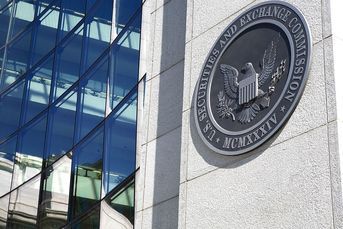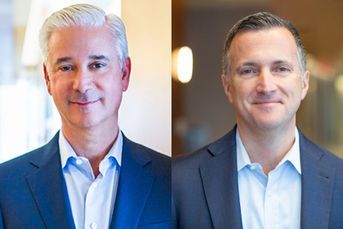What zero commissions mean for B-Ds
 1
1
Does eliminating commissions add to the downward pressure on advisory fees?
Discount broker Charles Schwab Corp., the biggest adviser custodian, has been shaking up the securities and financial advice industries for decades. Its move last month to eliminate commissions for most online trades is only the latest in the company’s rich history of taking jabs at the competition and cutting costs for consumers.
[More: There’s more evolution than revolution in zero commissions]
Schwab became the first discount broker in the wake of industry deregulation in the mid-1970s, undercutting the stranglehold Wall Street had on fees. Now, with $3.8 trillion in client assets, Schwab is sticking a fork in trading commissions for stocks, exchange-traded funds and options. Under the banner of making investing accessible to more people, it’s telling the securities and financial advice industries that their old, expensive ways are facing more pressure.
The broader financial services industry has been anticipating such a move, known widely as “the race to zero,” for years, and advisers increasingly are selling products that generate fees instead of commissions. But trade revenue is still a component of many firms’ top lines and the entire industry will lose revenue as a result of Schwab’s move to some degree, while certain firms will feel the biggest jolts.
“Any time an industry cuts prices, it hurts the little guys and helps the incumbents. But it lowers everyone’s profit margin,” said Mark Casady, the former CEO and chairman of LPL Financial, the largest independent broker-dealer with more than 16,000 registered brokers and advisers. “Of course, this is the way forward for financial services. It needs to keep taking costs down for investors. Lowering prices always expands a market.”
[More: Zero commission fight could pressure wirehouse earnings]
Schwab, and the firms that followed its move with their own zero-commission announcements, have to hope they attract a large enough share of the assets from new investors so that the moves pay off. Executives at rival firms also noted the genius of Schwab’s move when it comes to marketing.
Revenue at risk
“The game in this industry today is about gathering more assets, and there’s many ways to approach that,” said Eric Schwartz, founder and executive chairman of Cambridge Investment Research Inc. “Using a giveaway or loss leader like zero-commission trades is one way to bring in more assets. The hope is that over time those assets migrate to a product or platform that is more profitable for the company. This is nothing unique.”
In the short term, zero commissions on these trades will wipe out a small chunk of revenue at Schwab — the company estimated 3% to 4% of total net revenue, or up to $400 million a year — and do the same at some competing firms that swiftly matched Schwab’s shift. Discount broker ETrade Financial Corp. and RIA custodians TD Ameritrade Holding Corp. and Fidelity Investments all quickly followed Schwab’s move to eliminate commissions for certain trades.
Pershing is the only large custodian for RIAs remaining that has not announced it is eliminating commissions for stock, ETF and options trades.
[More: Raymond James dips toe into commission-free trades]
All these RIA custodians, however, are less vulnerable than perceived because they already operate more like banks and less like traditional trading platforms that generate revenue from clients making trades. The amount of income they generate from interest on clients’ cash, or net interest income, is more important to them than commissions.
Wirehouses Merrill Lynch and UBS Financial Services followed Schwab’s bold move by expanding free trades or eliminating asset management fees for some separately managed accounts, for some clients. It’s a perk such firms can offer wealthy clients when advisers in the big bank or wirehouse segment generate an average $1 million or more in annual fees and commissions.
Morgan Stanley, like most other brokerages, has tried to insulate itself from eroding revenue from commissions by shifting its advisers away from sales of products that generate commission dollars and toward financial planning and advisory accounts that generate quarterly and annual advisory fees. With close to $2.6 trillion in client assets, Morgan Stanley said its fee-based assets now make up 46% of total client assets, up from 45% a year ago.
Next moves?
On a call with analysts in mid-October to discuss third-quarter earnings, CEO James Gorman was asked whether discount brokers would take aim at advisory fees next, now that some trading costs have flatlined. He didn’t say no.
“You are rightly questioning will there be pricing pressure on advice,” Mr. Gorman said. “I mean, at the level clients are paying — I think it’s mid-70 basis points for advice on dollars of assets — it’s a great value question. The advice pricing holds up as long as your clients are getting value.”
[More: How free trading threatens the RIA business model]
Another part of the industry that is still dependent on commission revenue is independent broker-dealers like LPL Financial, Raymond James Financial Inc. and Ameriprise Financial Inc. These firms seem to be trying to figure out their next moves. As the rest of the industry becomes cheaper, the value they offer investors becomes increasingly reliant on financial planning and advice.
IBDs don’t have meaningful direct-to-consumer investment platforms but they focus on charging for financial planning and other services to clients. Raymond James has dipped its toe into the financial advice price war by announcing it will eliminate transaction fees for stocks, exchange-traded funds and options for the firm’s small investment adviser division. It’s said the move could represent a decline in revenue in the neighborhood of $7 million.
LPL Financial recently told its advisers it was “exploring its options” regarding the price war and would get back to them by Christmas with further information. CEO Dan Arnold told analysts on a third-quarter earnings call that LPL cut costs on transactions and advisory platforms by $15 million in 2019 and will do about the same in reductions for advisers in 2020.
“The independent firms have to articulate what’s so valuable about them because pricing isn’t an issue anymore,” said Aron Levine, head of consumer banking and investments at Bank of America, which owns Merrill Lynch.
These firms also buy and sell products like mutual funds and variable annuities, and commissions for those products have not yet been erased.
The long run
The long-term complications of the so-called race to zero may prove more pernicious for the broader financial advice industry, which is made up of more than 325,000 registered salespeople and registered investment advisers.
[More: Fidelity fee match spells relief for investors, says Morgan Stanley]
Fees that advisers and firms typically charge clients range from 70 to 100 basis points annually, executives said, and have been under downward pressure since the credit crisis. The pressure is coming mostly from discount brokers and digital advice platforms, according to consultants. So-called robo-advisers usually charge 25 basis points to 50 basis points of client assets annually, or one-third to half of the typical price of a large brokerage firm.
But while the fees that clients pay may have slid, the average client account size across the brokerage and RIA industries has grown, boosting revenue to advisers and their firms.
War of attrition
The race to zero is a war of attrition, said Mr. Schwartz of Cambridge Investment Research.
“[A move to zero commissions] is one more step, and it’s not the last, in the incremental lowering of pricing that the financial advice industry faces,” he said. “It’s another step in that direction, like the move over the past decade of advisers using low-cost ETFs versus higher-cost active funds in client portfolios.”
[Recommended video: Why aren’t people joining the financial advice industry?]
So far, it hasn’t hit the retail wealth management adviser. At least not yet.
“Cutting trade costs to zero and the robo-advisers are issues that affect middle-class clients and do-it-yourself clients,” said one Ameriprise adviser, who asked not to be named.
He said Ameriprise targets clients with $500,000 to $5 million in assets, clients who focus on service and “real” financial planning. “I haven’t reduced my assets under management fees, and I get zero pushback from clients,” the adviser said.
On that earnings call last month, Mr. Gorman said service to clients will become paramount in the race to zero.
“With the research, the trade execution, the financial planning, tying people into their long-term charitable giving and trust and estate planning and working with their accountants — it’s complicated stuff,” Mr. Gorman said. “And being wrong on this, and the tax implications of being wrong absolutely overwhelms a few basis points on the fees. That means having high-quality advisers giving high-quality advice in my view is a winning strategy.” Our final Women Adviser Summit of 2019 will be held in New York City. Register now.
Learn more about reprints and licensing for this article.








